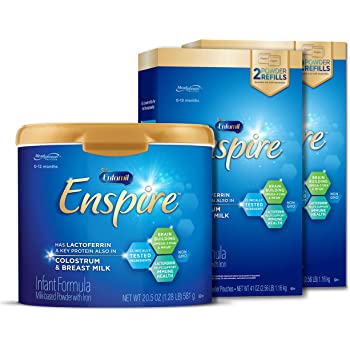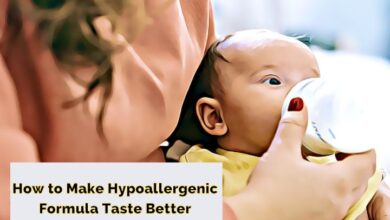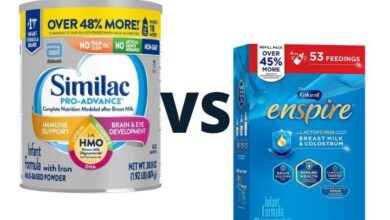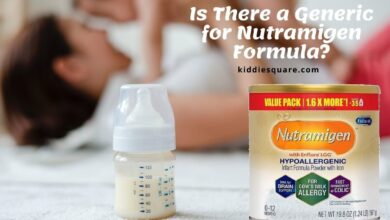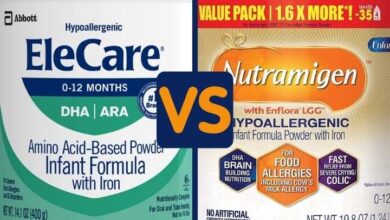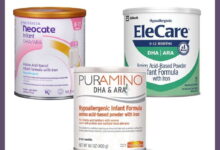Transitioning from Breastmilk to Formula
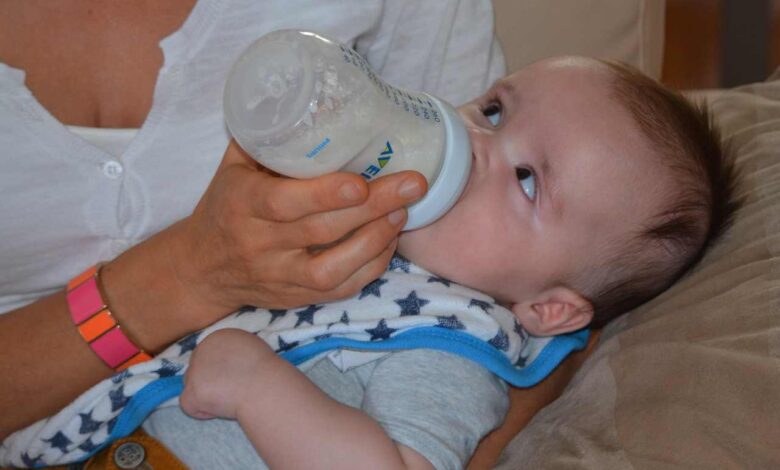
Transitioning from breastmilk to formula may or may not work for every baby. Some babies are picky when it comes to switching from breastmilk to formula while others go along with the flow.
For my first daughter, it took forever switching her from breastmilk to formula. It took a while before she could adjust to formula.
Each breastfed infant will respond and adjust differently with regards to changing from breastmilk to formula. One significant thing to look out for is how your child responds to the changes.
Therefore, if you have a baby with difficulty transitioning from breastmilk to formula, then this post is for you. I’m giving out my super effective tips to help mothers move their babies to formula.
Table of Contents
Why Should I Transition from Breast Milk to Formula?
You may have heard mothers asking – why should i transition from breatsmilk to formula? I want to say that it has a lot of benefits.
Regardless of what you choose to do – whether you are simply supplementing your breastmilk or switching to formula totally, it ought to be done bit by bit to make the change as simple as possible for baby and you.
There are some key points why mothers can switch their breastfed infants to formula. The reasons could be as follow:
- Limited amount of breast milk supply.
- When it becomes exhausting to pump or Breastfeed baby because of work
- Mother want to stop breastfeeding before a particular time,
- When mom is undergoing medical procedures that are not safe for their breastfed babies,
- When the baby finds it difficult to latch effectively
- For Medical related issues
Whatever your reasons are, switching a baby from breast milk to formula quick and promptly may not be that best ideal. Do it gradually, and follow for your doctor’s advice.
When to Switch to Formula from Breastfeeding?
Switching to formula from breastfeeding takes time. Most Doctors do advice mom to wait until baby is 6 months old or more before start on a formula.
This is true from a medical standpoint, where a doctor’s job to share what is most healthy. But, this idea is for the perfect world where moms don’t have issues breastfeeding.
On a medical ground where a mom can’t feed her baby, then transitioning from breast milk to formula becomes inevitable.
In a way, switching to formula from breastfeeding has no specific time, you can do it whenever it is convenient. You know what’s best for you and your baby. There is no ideal time to make the switch.
Picking when to switch your infant off breastmilk is a personal choice. You need to do what’s best for you and/or child.
Transitioning from Breastmilk to Formula – A Super Illustrative Guide
Note there is no automatic formulae to transitioning from breastmilk to formula milk. But, It is essential to take-note of all tips i will be sharing with you.
I want you to know that for this to go as planned, you shouldn’t take this with levity. Commitment is needed if you are to succeed in your quest.
My daughter (Lisa) was a picky eater, she was used to breastfeeding and never wants anything else. It took me a while before I could get her to take formula.
I’m going to share with you, the vital tips I used to get her to take formula. Here are my super illustrative guide for a smooth transition to formula.
1. Seek a Pediatrician’s Advice

Seek a Pediatrician’s advice before switch to a new baby formula. It is heartwarming, particularly for new mothers, to have an expert’s support when settling on new choices that involve their child.
Your baby’s pediatrician may suggest a particular formula to you or may give supportive tips to assist you in transitioning from breastmilk to formula.
2. Give Baby Expressed Breastmilk in a Bottle
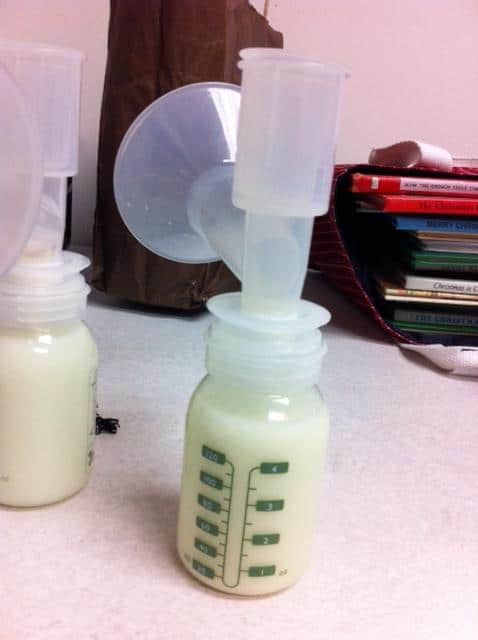
One hard part of transitioning to a formula is getting breastfed children to feed from a bottle. Be that as it may, more practice makes perfect.
If your baby is not feeding well on a bottle, mix breastmilk into their formula to get them to feed on their bottle easily.
This is done to create a smell and taste ambiance the child is more acquainted with, which enables your baby to adjust to the formula feeding.
When your child becomes adapted to feeding from a bottle, switching to formula will be much easier.
3. Introduction Formula Gradually
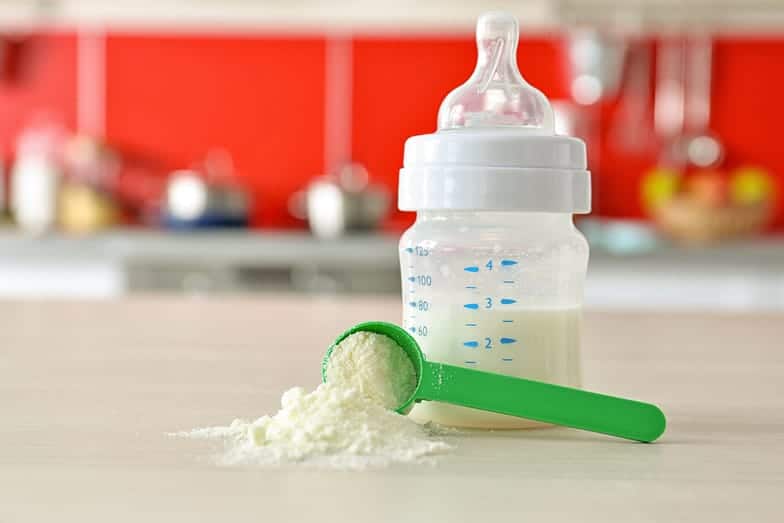
At first, when introducing formula to a baby it should be done gradually. It’s important to do a test to see how a baby responds and adjusts.
You can then transition fully if your baby don’t mind much about what you feed him or if there is no reaction.
4. Drop Breastfeeding Sessions Gradually
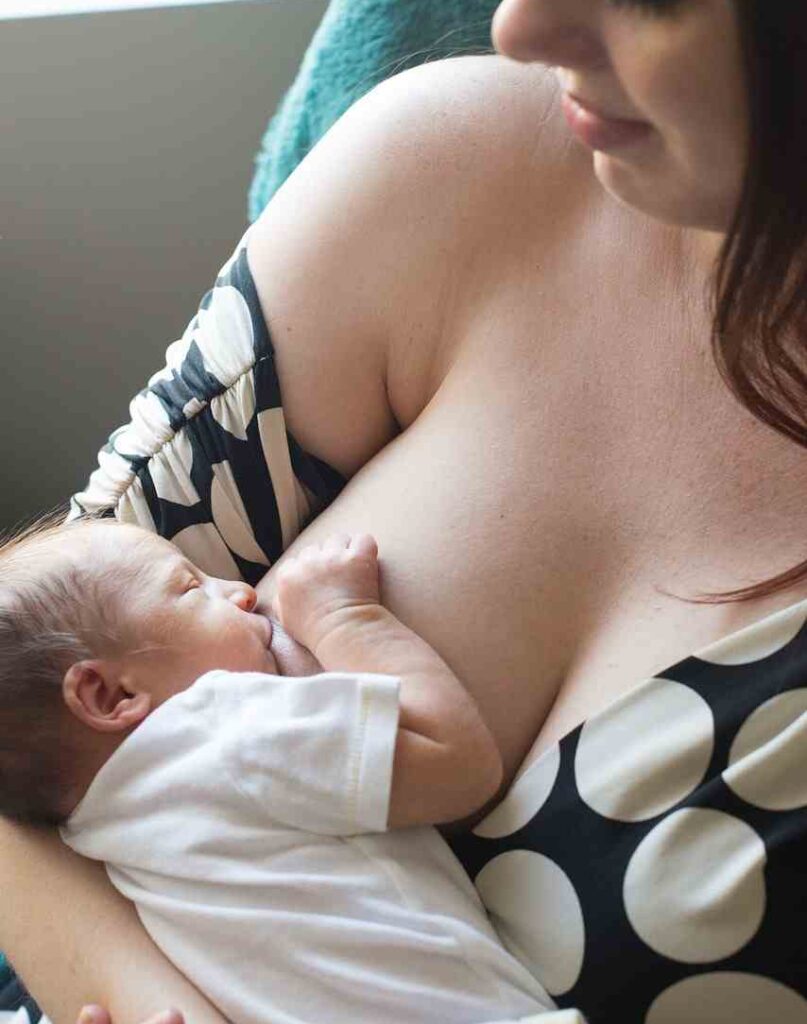
Making the transition from breast milk to formula become easier when you to approach things slowly and carefully by dropping a feeding session and replacing it with formula.
For example, if the breastfeeding session of your baby is seven (7) times in a day, try breastfeeding baby six (6) times and give baby a bottle for the seventh feeding session.
Keep dropping breastfeeding sessions until your child is completely cut off from breastmilk.
5. Guide Baby’s Focus Toward the Bottle
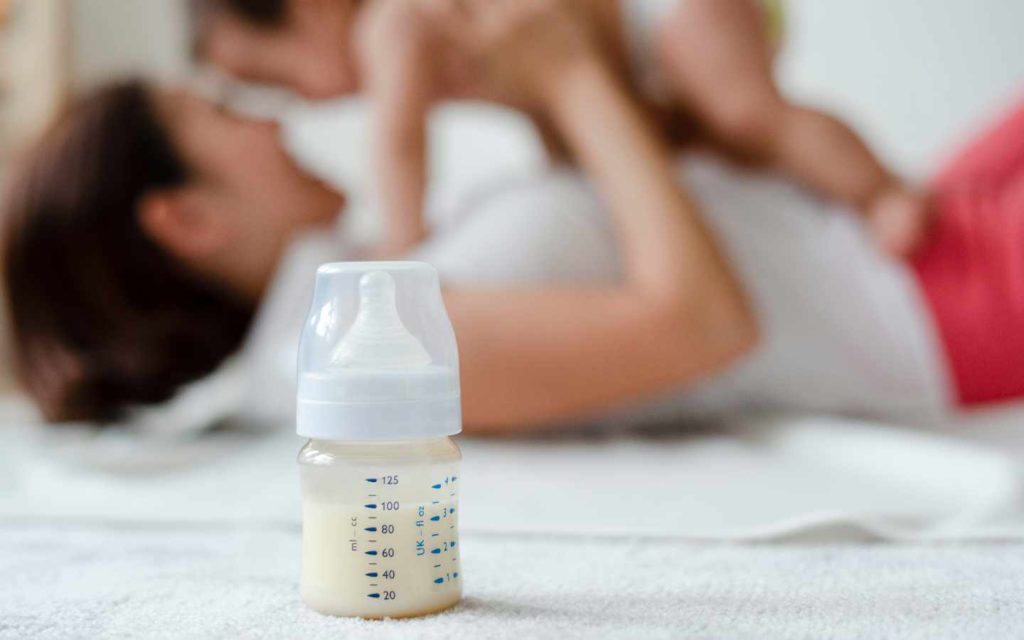
To get children to bottle-feed, try as much as you can to direct baby’s attention towards the bottle and away from you.
It might appear tricky to get children that have been breastfed to take milk that isn’t from their mother, particularly because children can perceive the breast milk from their mothers.
To distract, and guide their focus toward the bottle, you can try making an insane funny face, singing songs she loves or tell her a story.
6. Give Formula when a Baby is really Hungry
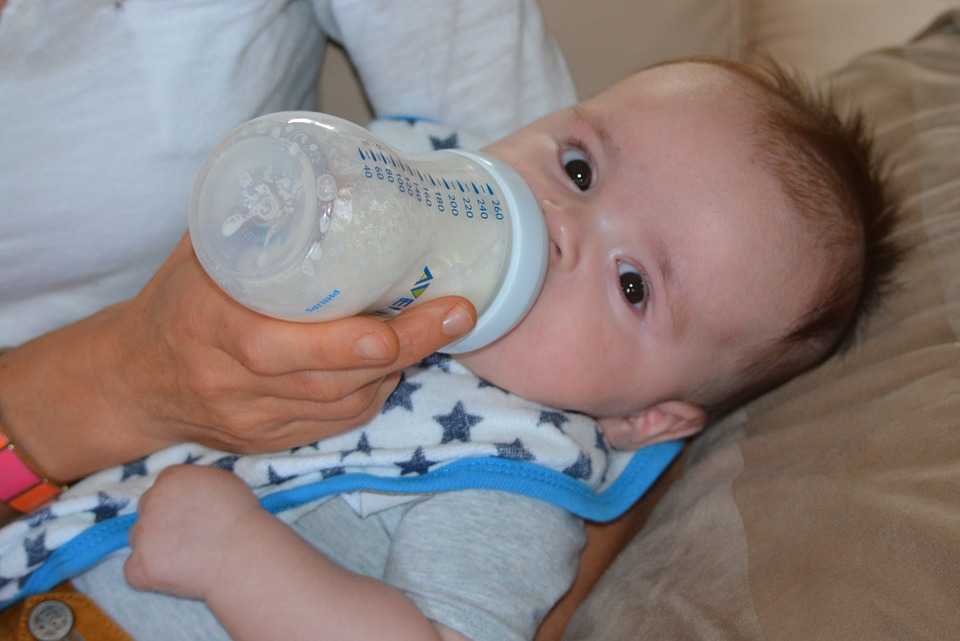
When babies are really hungry, they’ll take whatever you give them. But, you shouldn’t go starving your babies because you want to feed them with formula.
When kids are hungry, they are unlikely to resist since he has no other choice but to drink what he is offered.
This gives the mother an ideal opportunity to feed her babies with a bottle.
7. Bottle’s Teat or Nipple
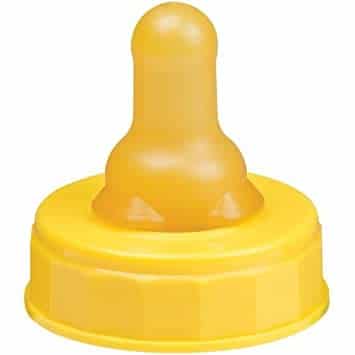
Bottle teat or nipple is another reason why your baby may be finding it difficult to acknowledge bottle feeding.
There are various types of bottle teats available, they come in various lengths, widths, and texture taking into account each child’s needs.
So if your child isn’t tolerating the bottle, don’t surrender yet. A change in bottle’s nipple can be the approach that may give desired result.
Here is my recommended nipple for all age range. Buy now
8. Let Somebody Else Do the Feeding

Mothers being being sole food source makes it difficult to transition from breastmilk to formula.
To correct this, your child needs to realize that other people, aside from his/her mother, can take care of his/her needs.
A companion or your partner can assist you with the feeding of your baby, and this will equally keep him from getting distracted by your smell.
Mistakes Many Mothers Do When Transitioning to Formula
1. Using Bad Nipple
Just like everyone else, babies do have their choice when it comes to the bottle nipple. Using the wrong nipple may cause your baby to want to reject formula.
For instance, rather than purchasing a lot of baby’s bottles or teats, get one first and check if your child approves of it. If it works, then you can go ahead to stock up.
For quality human-like nipple – Get Yours Now
2. Hasty Drop In Feeding Session
Sometimes mothers drop too many feeding sessions at once when transitioning from breastmilk to formula, they don’t know it is a big mistake.
To do this, choose which breastfeeding sessions to substitute first, probably the session that is generally not convenient to you. Then you can go ahead to replace it with formula milk.
Give your baby ample time to adjust to the change before dropping the next one. Take it slowly and carefully, you will get there.
3. Forcing the Infant to Feed
The way you feel when pressured into things is the same way babies feel when forced to feed.
Nobody appreciates been mandated into anything they wouldn’t do. The equivalent goes for infants transitioning formula milk. A show of force won’t change anything.
It could even aggravate the situation if your child now connects nervousness and fright with the bottle.
Be gentle and take it easy with your baby. Give it time, your baby will find a way to use the bottle and get accustomed to the formula’s taste.
4. Mother’s Guilt
Mothers in some cases feel bad during the transition to formula milk. Some mother see transitioning as punishment to their child, for me mothers should feel that way.
Using formula milk shouldn’t make you feel terrible, so far your child is still being breastfed.
Which Formula Tastes the Most Like Breastmilk?
Transitioning from breastmilk to formula in general involves understanding what formula to pick.
With the array of formula available on the market, it becomes so hard to choose what’s best for a breastfed child.
Parents should get pick a formula that mimics breastmilk in every possible way, especially in flavor, texture, and nutrients, etc.
To help you with such decisions, here are my top 3 choices:
Enfamil Enspire Baby Formula – Enfamil Enspire is a non-GMO milk formula that was made solely for breastfed infants.
It contains MFGM that helps to improve intellectual advancement, it has lactoferrin that enhanced the baby’s immune system and intestinal tracts.
Several parents have testified that their breastfed child aligned to this formula easily.
Similac Pro-Advance Infant Formula – with this product, Similac made a close option to breastmilk.
It contains an exceptional mix of DHA, vitamin E, and lutein for the mind and eye development.
It also has Human Milk Oligosaccharide which are probiotics and usually bountiful in breastmilk.

Gerber Good Start Gentle – It is a mixture of DHA, comfort proteins and prebiotics, that makes it closest to breastmilk. This formula contains corn maltodextrin and lactose for taste. It is great for lactose intolerance children, gentle on the tummy and no strong odor.

How Long Does It Take a Breastfed Baby to Adjust to Formula?
Indeed, I’m not an expert medical expert, yet as a mother of two and a convener of a mom gathering where we share child-raising experiences.
I believe everyone is different and so are babies. Do not expect your baby to react the same way to a formula like the other children.
You may have encountered a scenario like this – You share a similar food with your relatives, but you are the only one that gets an awful stomach infection, and others don’t?
The same thing also applies to babies, some adjust fine to formula while some don’t. Therefore, it takes about 1 – 2 weeks or in rear case 6 weeks for a breastfed baby to adjust to formula.
How to Know if Your Baby is Affected by Formula Change?
No parent wants to see their little one experience distress or discomfort. Sometimes when you switch to formula, you may see baby arch their back and become jumpy during feeding.
You may notice your little one become gassy and fussy or with zero bowel movement. The actual reason is that bottle-fed infants will in general take in more air compared with babies that breastfed.
To solve this issue, ensure you burp your little one within and after each feeding session. After feeding, allow baby to rest before carrying them around.
Best Bottles for Breastfeeding Baby Switching to Formula
When it comes to feeding your baby, take nothing for granted. As a new mom, when introducing a bottle to your breastfed baby, you may encounter refusal.
A handful of parents have written to us, that their baby refused to feed on a bottle. little did they know that there are ways they can make their breastfed baby take a bottle.
We cover all of our favorite bottles for breastfed babies in our article, “Best Bottle for Breastfed Baby Who Refuses Bottle,” including the ones that are perfect for breastfed babies switching to formula.
Ultimately you want to choose a bottle that mimics the natural human breast as much as possible in warmth, feel, and texture. Here are our top great choices:
Tommee Tippee Baby Bottle
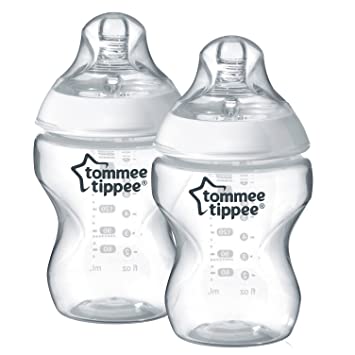
Tommee Tippee Closer to Nature Bottles is one of our best bottles for breastfed babies switching to formula. It is a perfect Newborn Starter Set for any new parent. This bottle makes the transition from breastmilk to formula much easier.
This bottle comes with soft silicon breast-like nipple; It allows the baby to latch on easily and flex during feeding.
The slow flow of Tommee Tippee nipple has an ultra-sensitive valve that offers less air, helping your baby to ingest more milk, and eliminates discomfort.
Dr. Brown’s Original Bottle

Dr. Brown’s Original bottle is pretty popular for most people. Dr. Brown’s original has the perfect bottle for a baby dealing with colic or those that get ingest too much air when bottle-fed.
Dr. Brown’s original offers an innovative vent technology that provides a natural flow rate during feeding.
When feeding baby, this bottle creates a positive-pressure flow for vacuum-free feeding, which is much more similar to breastfeeding.
Mimijumi Baby Bottle

Mimijumi is perfect for babies transitioning from breastmilk to formula. It is one of the best bottle available on the market. Designed to be ideal for all babies. Mimijumi bottles feel as close as breastfeeding and come with natural colors and textures.
This product provides the best possible transition to a formula with its innovative nipple design like a mother’s breast.
The bottle comes with an anti-colic integrated venting system that reduces airflow, decrease colic, and gas. Mimijumi also allows the baby to control the flow of milk.
NUK Smooth Flow Anti-Colic Bottle
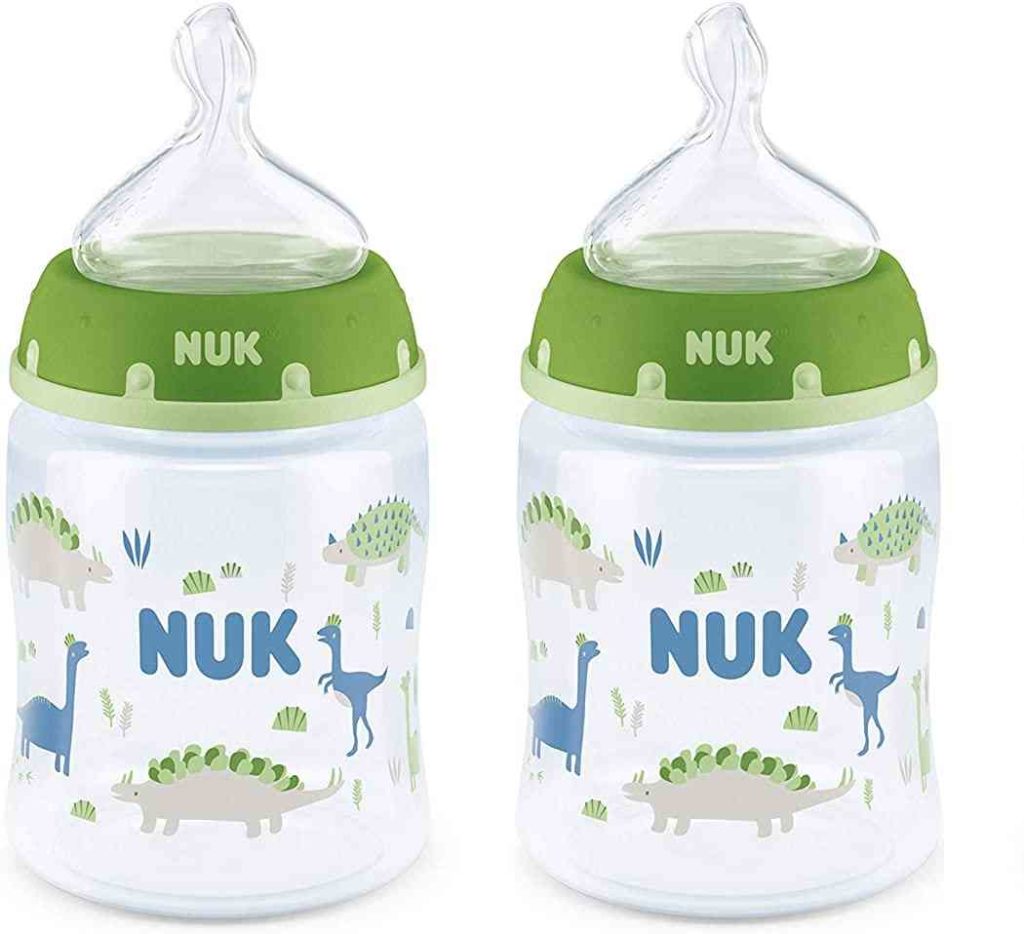
NUK Baby Bottle has a mom-like shape nipple, which perfectly fits into a baby’s mouth. Just like how babies feel when feeding on mom’s breast that how they think with Nuk Smooth flow bottle.
NUK offers 3 different nipple flow rates. For 4+ months to 10 months old baby, this bottle comes with a medium flow nipple. The product is comfortable and feels natural for babies.
Munchkin Latch Baby Bottle
Munchkin Baby bottle is among the best bottle for babies transitioning from breastmilk to formula. Munchkin bottle can help your baby transcend between breastfeeding and bottle.
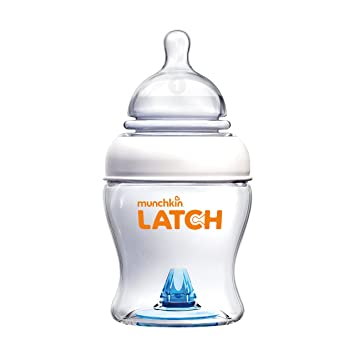
The nipple stretches enough and makes latching easier. They move like breast, making baby feel comfortable.
Olababy Gentle Baby Bottle
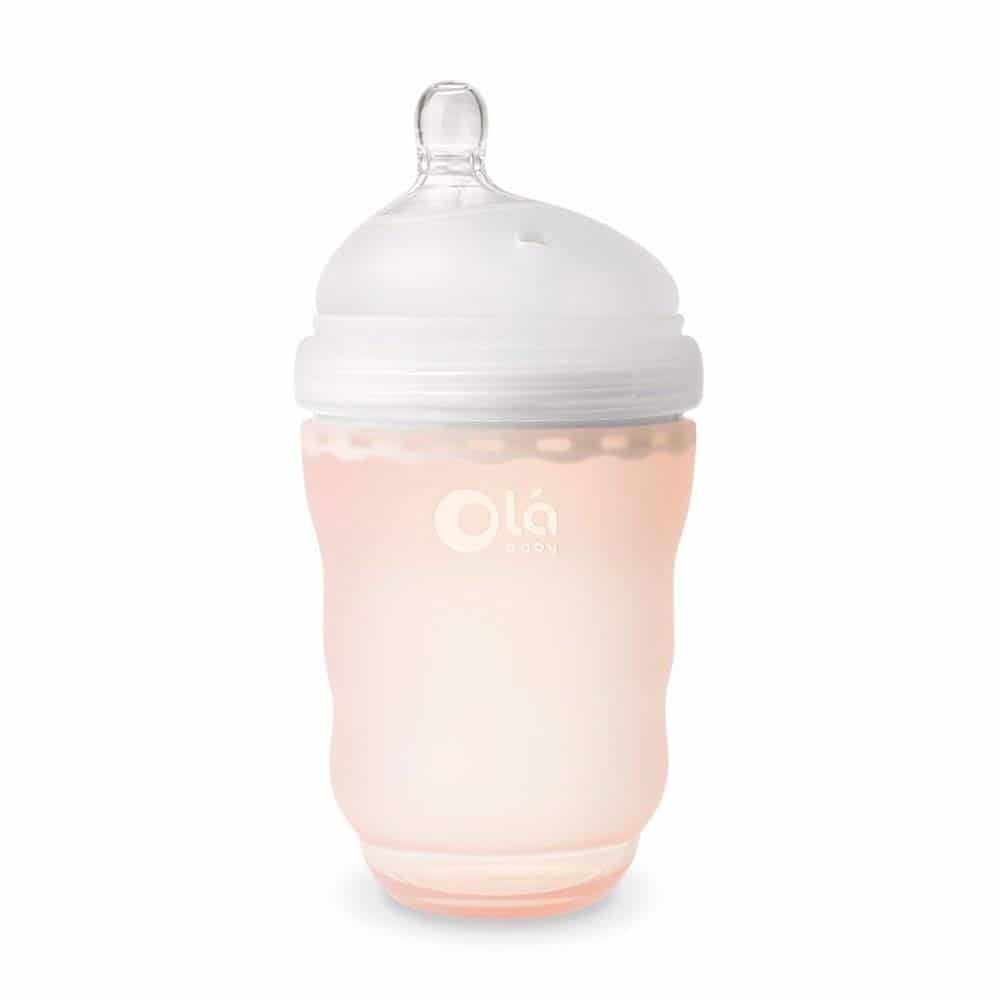
Olababy baby bottle looks exceptional because of its appealing colors and gentle curves. The bottle gives your baby a toxin-free feeding experience and unique comfort and comes with a 100% medical-grade silicone nipple.
It has a dual anti-colic valve system that helps prevent colic and comes with an off-centered nipple that allows babies to latch on easily. Olababy stands as one of the best bottles for breastfed babies switching to formula.
Take Away
Whatever the case may be, whether you are introducing formula to supplement breastfeeding or transitioning from breastmilk to formula. It requires a great deal of endurance.
Keep in mind that your baby needs an ample amount of time to adjust to the changes you are presenting and that this switch can’t occur abruptly.
I believe the tips and advice mentioned here will guide you through a smooth transition.
Like this article? I would be happy if you share or pin it for some other time. You can also stay in touch and follow us on Facebook, or Pinterest.
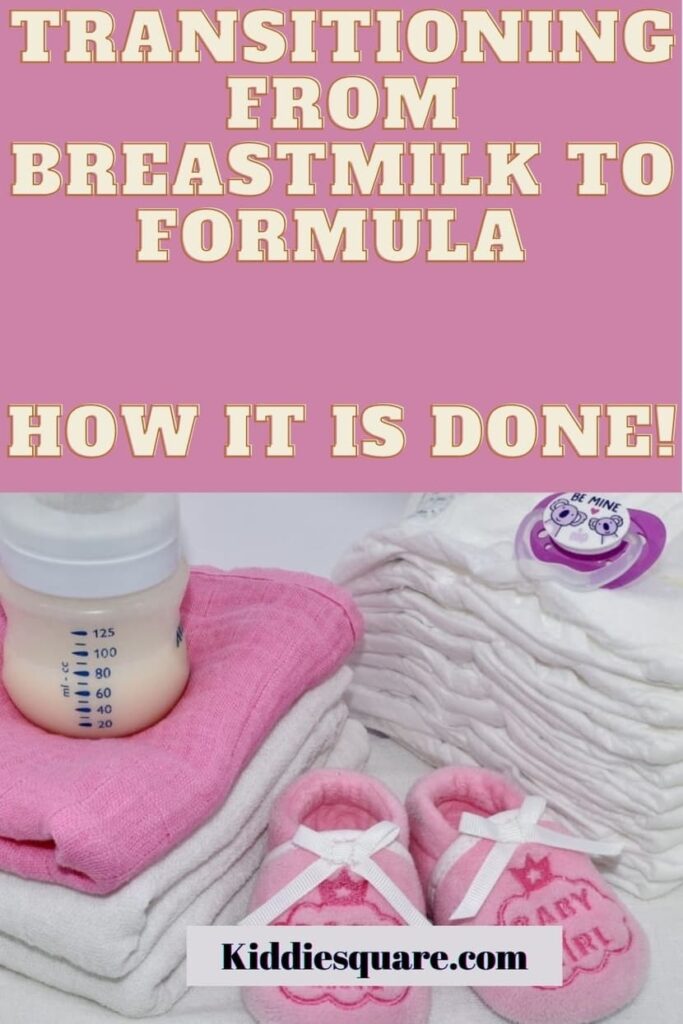
DISCLAIMER – The information on this post is for educational purposes only and should not be construed as a substitute for advice from a medical professional or health care provider.


